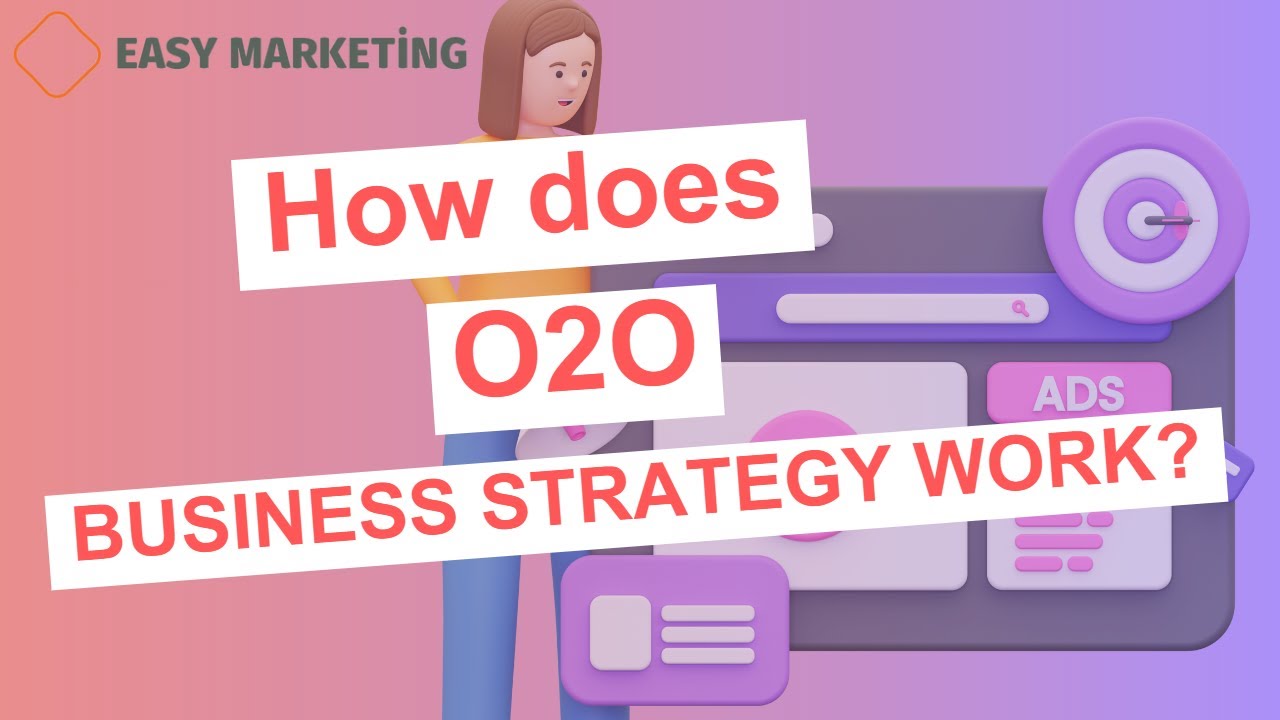In today’s digital age, the line between online and offline shopping experiences continues to blur, giving rise to the revolutionary concept of O2O (online to offline) commerce. This ground-breaking strategy aims to bridge the gap between e-commerce giants like Amazon and brick-and-mortar retail store giants like Walmart.
By seamlessly integrating online and physical store channels, retailers are able to entice customers with a variety of enticing options, such as in-store pick-up and curbside pickup. This innovative approach not only enhances the shopping experience but also propels sales to new heights.
Join us as we delve deeper into the world of O2O commerce and discover the endless possibilities it holds for both retailers and consumers alike.
Table of Contents
- online to offline strategy
- Examples Of O2O Commerce
- Amazon And Walmart’s O2O Strategies
- Increased Home Delivery And Curbside Pickup Services Among Retailers
- O2O Commerce Drives Awareness And Store Visits
- The Role Of Showrooming In O2O Commerce
- O2O Commerce Vs Clicks-To-Bricks Models
- O2O Trends In Amazon’s Acquisition Of Whole Foods
- Leveraging Online And Offline Channels For O2O Commerce
online to offline strategy
The online to offline (O2O) strategy in commerce involves bringing potential customers from online channels to physical stores. This strategy aims to create awareness online and persuade customers to visit physical stores for purchases.
Examples of O2O commerce include in-store pick-up, returning online purchases at physical stores, and placing online orders while in a physical store. Retail giants like Amazon and Walmart have embraced O2O commerce, with other retailers such as Target, Kroger, and Nordstrom expanding home delivery and curbside pickup services.
O2O commerce leverages the benefits of both online and offline channels to attract and retain customers, allowing them to try on or compare items in physical stores before making online purchases. It is not the same as the clicks-to-bricks or click-and-mortar models.
O2O trends in recent years can be observed through Amazon’s acquisition of Whole Foods, where they invest in physical space. Retailers also employ strategies like acquiring companies with a significant online customer base for O2O commerce.
O2O services such as home grocery delivery and curbside pickup, which allow shoppers to buy items without entering the store, have seen significant growth and value, particularly for Walmart’s e-commerce sales.
Key Points:
- O2O strategy involves bringing online customers to physical stores for purchases
- Examples include in-store pick-up, returning online purchases at physical stores, and placing online orders while in a physical store
- Retail giants like Amazon and Walmart have embraced O2O commerce
- O2O allows customers to try on or compare items in physical stores before making online purchases
- O2O trends include Amazon’s acquisition of Whole Foods and acquiring companies with a significant online customer base
- Home grocery delivery and curbside pickup have seen significant growth and value for Walmart’s e-commerce sales.
Sources
https://www.investopedia.com/terms/o/onlinetooffline-commerce.asp
https://www.forbes.com/sites/theyec/2021/02/08/nine-smart-ways-to-unify-online-and-offline-marketing-strategies/
https://www.shopify.com/enterprise/o2o-online-to-offline-commerce
https://www.forbes.com/sites/forbestechcouncil/2021/10/25/online-to-offline-commerce-turning-online-visits-to-offline-sales/
Check this out:
💡 Pro Tips:
1. Utilize social media ads and geolocation targeting to reach potential customers in the vicinity of your physical store. This can help drive foot traffic and increase awareness of your online-to-offline offerings.
2. Offer exclusive promotions or discounts for customers who make purchases in-store after engaging with your online channels. This can incentivize people to visit your physical store and make a purchase.
3. Implement a seamless integration between your online and offline inventory systems to ensure accurate product availability information for customers. This will help manage expectations and prevent disappointment when customers come to your physical store based on online information.
4. Leverage customer data collected from online channels to personalize the in-store experience. Use insights about customer preferences and purchase history to provide tailored recommendations and offers, creating a seamless transition from their online interactions to their in-store visit.
5. Host offline events or workshops that complement your online offerings. For example, if you sell fitness equipment online, organize fitness classes or workshops at your physical store to attract customers who are interested in your products. This can help build a stronger relationship with customers and enhance their overall experience.
Examples Of O2O Commerce
O2O commerce, also known as online to offline commerce, is a business model that aims to bring potential customers from online channels to physical stores. This strategy utilizes the benefits of both online and offline channels to attract and retain customers.
Some of the prominent examples of O2O commerce include:
In-store pick-up: Customers have the option to place an order online and pick it up from a physical store. This allows them to avoid shipping costs and receive their purchase immediately.
Returning online purchases at physical stores: Many retailers now offer the convenience of returning items purchased online at their brick-and-mortar locations. This helps to streamline the return process and provides customers with a face-to-face interaction.
Placing online orders while in a physical store: Some retailers have integrated online ordering systems within their physical stores. This enables customers to explore a wider range of products or variations, place an order online, and have it delivered to their preferred location.
Amazon And Walmart’s O2O Strategies
Two retail giants, Amazon and Walmart, have successfully embraced the O2O commerce strategy. Amazon, primarily known as an online marketplace, has made strategic moves to enter the physical retail space.
Its acquisition of Whole Foods is a clear representation of their O2O strategy, where they are investing in physical space to better serve customers in the offline world. By integrating Whole Foods into their online platform, Amazon can leverage its vast customer base and bring them to physical stores.
Similarly, Walmart has seen significant growth in its e-commerce sales and has emphasized O2O services such as curbside pickup. With curbside pickup, customers can buy items online and collect them without entering the store.
This service has been highly valued by Walmart as it combines the convenience of online shopping with the immediacy of physical pickup.
Increased Home Delivery And Curbside Pickup Services Among Retailers
In addition to Amazon and Walmart, other retailers like Target, Kroger, and Nordstrom have recognized the importance of O2O commerce and have also increased their home delivery and curbside pickup services. These services allow customers to have their purchases delivered directly to their homes or collect them from designated pick-up points without having to enter the store.
This shift towards O2O commerce reflects the changing consumer preferences and the need to provide seamless shopping experiences across digital and physical channels. By offering various delivery options, retailers enhance convenience and cater to the evolving demands of their customers.
O2O Commerce Drives Awareness And Store Visits
One of the key advantages of O2O commerce is its ability to create awareness online and drive customers to visit physical stores. Online advertising, social media campaigns, and targeted promotions can all be utilized to generate interest and attract potential customers to physical locations.
Physical stores offer unique experiences that cannot be replicated online, such as the ability to touch and try on products before making a purchase. This aspect of O2O commerce, often referred to as “showrooming,” encourages customers to visit physical stores to feel the products and compare them before making a purchase decision.
By combining the benefits of both online and offline channels, retailers can capture the attention of customers online and entice them to visit physical stores. This integration enables a more comprehensive and engaging shopping experience, ultimately leading to increased customer satisfaction and sales.
The Role Of Showrooming In O2O Commerce
Showrooming plays a crucial role in O2O commerce as it incentivizes customers to visit physical stores. While online shopping offers convenience and accessibility, it lacks the sensory experience that physical stores provide.
Customers often want to touch, feel, and try products before committing to a purchase.
Showrooming allows customers to explore a product in-store and then make the actual purchase online, leveraging the benefits of both channels. Retailers can utilize this behavior by creating engaging and immersive in-store experiences that captivate customers and drive them to make purchases through their online platforms.
Showrooming has become a common practice among consumers, and retailers can harness its potential by incorporating digital technologies and providing seamless integration between online and offline channels.
O2O Commerce Vs Clicks-To-Bricks Models
It is essential to differentiate O2O commerce from other similar business models like clicks-to-bricks or click-and-mortar models. While these models also bridge the gap between online and offline channels, they focus on different aspects.
Clicks-to-bricks models refer to online retailers opening physical stores to expand their reach and provide a physical presence to customers. This approach aims to complement the existing online presence and offer an in-person experience.
On the other hand, O2O commerce focuses on bringing potential customers from online channels to physical stores and using both channels synergistically to drive sales and enhance customer experiences.
O2O commerce leverages digital technologies, online advertising, and targeted promotions to create awareness, generate interest, and encourage customers to visit physical stores for a more immersive shopping experience. By intertwining online and offline channels, O2O commerce creates a seamless customer journey and maximizes business growth potential.
O2O Trends In Amazon’s Acquisition Of Whole Foods
Amazon’s acquisition of Whole Foods illustrates the ongoing trend of O2O commerce. Amazon, primarily an online marketplace, recognized the value of physical stores in certain industries, particularly groceries.
The acquisition enabled Amazon to leverage Whole Foods’ vast network of stores and customers, integrating them into their online platform.
This move showcases Amazon’s commitment to blending online and offline channels to provide customers with enhanced shopping experiences. By investing in physical space, Amazon can tap into a wider customer base and create synergies between its online platform and physical stores, thereby strengthening their O2O strategy.
Leveraging Online And Offline Channels For O2O Commerce
O2O commerce leverages the benefits of both online and offline channels to attract and retain customers. Retailers employ various strategies to make the best use of these channels and optimize their business growth.
Some of these strategies include:
– Acquiring companies with a significant online customer base: By acquiring companies that have a strong online presence, retailers can tap into their customer base and utilize it to drive customers to physical stores.
– Home grocery delivery and curbside pickup services: Offering convenient delivery options where customers can have their groceries delivered to their homes or collect them at designated pick-up points without entering the store.
– Seamless integration of online and offline platforms: Ensuring that the online and physical stores are interconnected, allowing customers to have a consistent experience regardless of the channel they choose.
By leveraging these strategies and embracing O2O commerce, retailers can effectively combine the strengths of online and offline channels to achieve optimal business growth and cater to the changing needs and preferences of customers.












